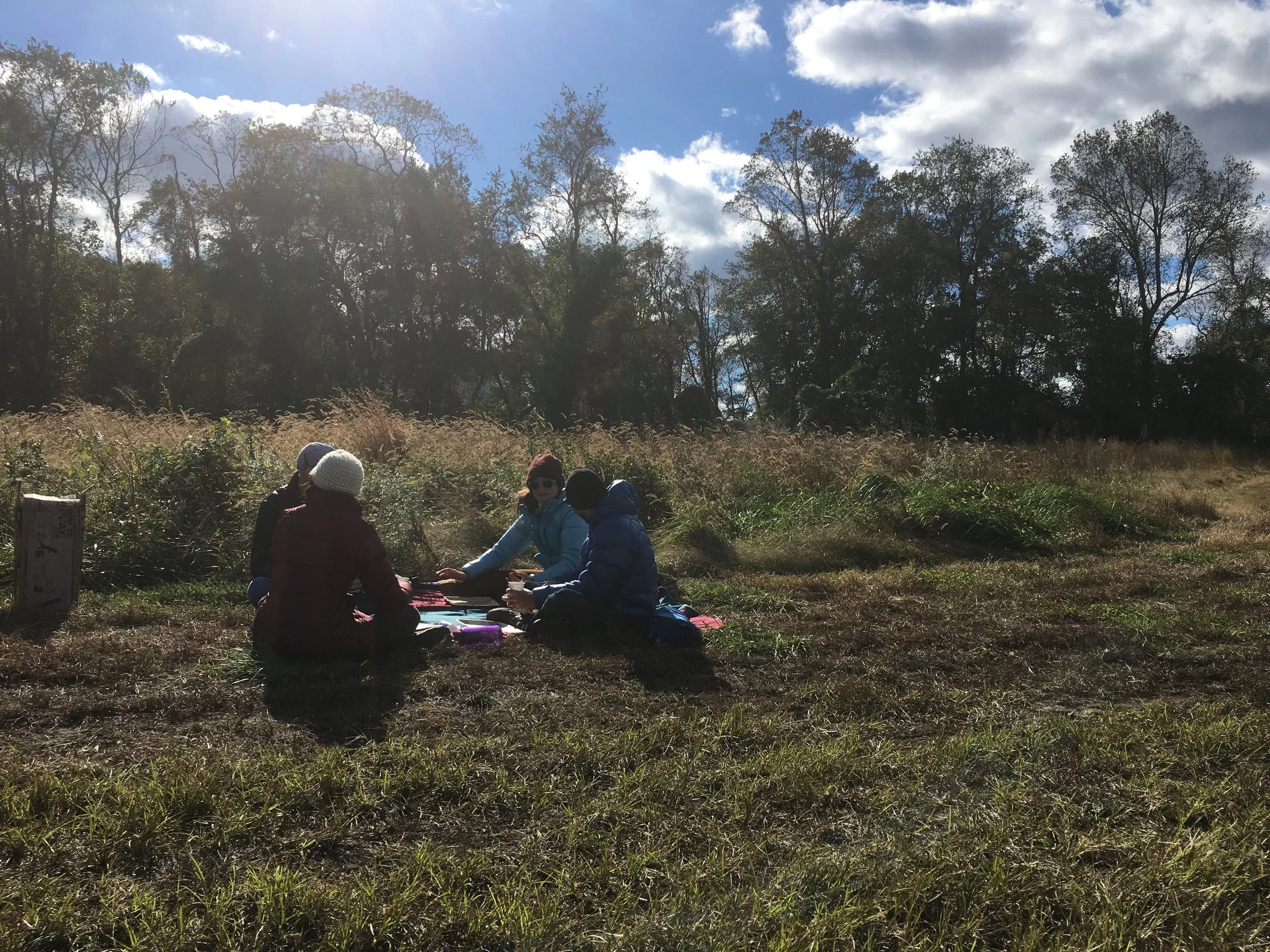by Denise Graveline, Owl's Nest Farm Market CSA member
Don't get me wrong. I'm a big fan of sleeping in...except on Petworth Community Market Saturdays. That's because I've learned that I can make best use of my CSA with Owl's Next Farm by showing up early...which is when you find the rare, only-here-for-a-week, or small quantity items that add so much variety to a share.
This week was the first market of the season, and I grabbed a long bunch of what I thought were spring onions. The long leaves hung over the sign and obscured it. But Liz corrected me: This was green garlic, thinned out of the rows of garlic. "We won't have too much of this, because if we harvest it all, we won't have fully grown garlic when the time comes," she explained. You don't need to tell me twice. I went back for another bunch.
When I got them home with the rest of my share and dumped them into the sink for a vinegar bath, you can see they dominated the sink as well as the stand. I've used garlic scapes before, the long green tails that grow out of garlic heads at a later stage. But green garlic was new to me, so I did some research.
This plant behaves a lot like a leek in terms of its structure, and needs to be cut and washed thoroughly because it can retain a lot of mud. There are no garlic cloves at the bottom, just a root plate that needs to be trimmed off, and like leeks, I found that removing the toughest outer layer also was a must. So was cutting these long stalks into manageable portions, the green part and the white part. I'd read you could use the entire plant, and when I cut off the green part, I smelled it at the cut. Strong garlic perfume emerged. That told me the leaves had plenty of value.
After combing through some references and recipes, I decided to blanch the greens in boiling water for a couple of minutes. At this point, I kept the green leaves separate from the whites and plan to store them separately. This helps reduce them in size (a good thing when your fridge is full of veg) and also helps preserve them; at this point, you could include them in a recipe or freeze them, once they dry. Blanching also evens out the sharpness of the strong garlic flavor, although you can cook green garlic without blanching it. Roasting and sauteeing also work.
I found a great variety of recipes, but think I will focus first on a green garlic hummus and a green garlic pesto. Those won't use up everything, so I will look to this list of green garlic recipes from the New York Times and this Indian spicy chutney, which can be made with either garlic chives or green garlic. Hummus and pesto will be easier to store, but I'm also going to save and freeze some of the leaves, which can be tucked into soups just as you would a bay leaf, or into risottos and stews as you would a spring onion--albeit one with a stronger flavor.
For the hummus, I always turn to Sarah Leah Chase's recipe for hummus bi tahini, in part because it makes a big batch and always turns out well. It's from her out-of-print Nantucket Open House Cookbook, and the recipe is here on Google Books. I'll have some fun figuring out how much green garlic to include, but I always like hummus with a lot of garlic in it.








